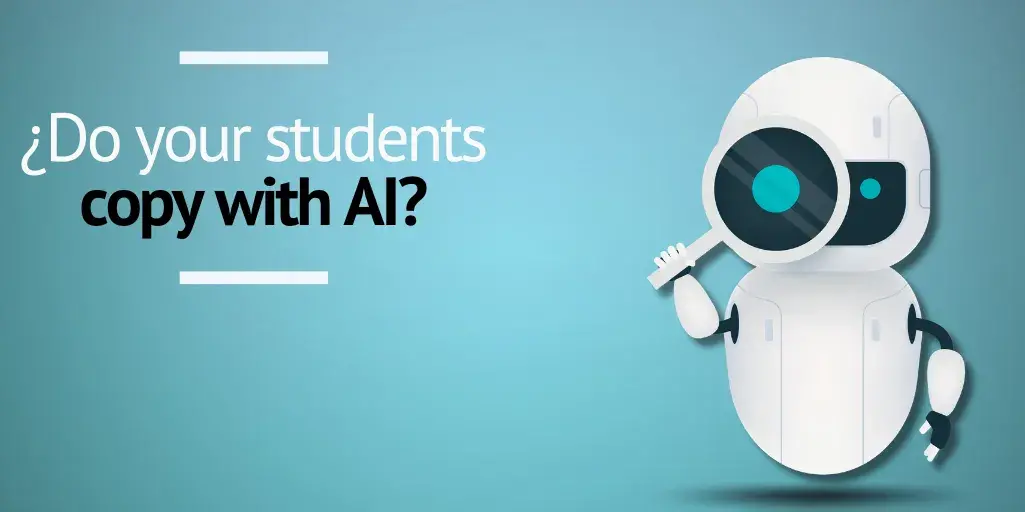To carry out e-learning, it is crucial to have reliable and effective tools. However, this is not just limited to the LMS platform you use, but to many others.
Without going any further, you will need one with which you can find out whether your learners are doing their assignments autonomously or whether they are being generated by AI.
Here is where the AI and the plagiarism checker come into action.
In this post, we will explain in a simple way what an AI plagiarism checker is and how it works, as well as the best options available to identify if students are copying.
Read on!
What is an AI plagiarism detector?
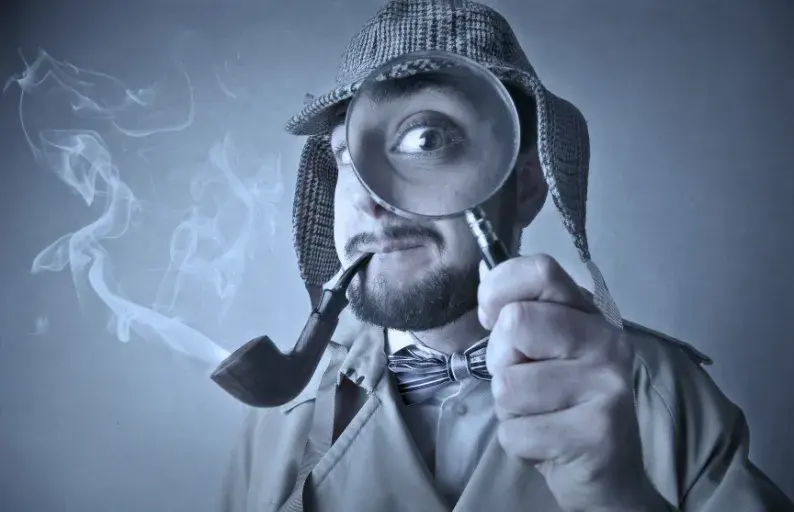
An AI plagiarism detector is a tool that uses advanced algorithms to check and analyse texts for parallels and possible cases of plagiarism.
To better understand what an AI plagiarism detector is and how it works, consider this analogy.
An AI plagiarism detector is like having a ‘digital super detective’ at your disposal, able to track and detect any suspicious content quickly and accurately.
Well, this superdetective uses special algorithms, which are the instructions on how to do its job, to compare different texts and look for similarities with existing texts.
In addition, the super detective uses a neural network, a kind of network of connections, to help it understand what the text means and how it is organised. In this way, it can recognise sentences and even entire documents that are similar to others.
Using artificial intelligence and machine learning, the superdetective is able to find any content suspected of plagiarism.
And watch out. AI plagiarism detection tools not only discover literal matches, but also paraphrases and subtle modifications, indicative of attempted plagiarism.
However, at least to date, no AI plagiarism detector is 100 percent infallible. In certain cases, we have witnessed the appearance of false positives or false negatives. Therefore, a ‘human’ review will always be needed to confirm the results.
How to detect plagiarism online? Use these 6 AI tools!
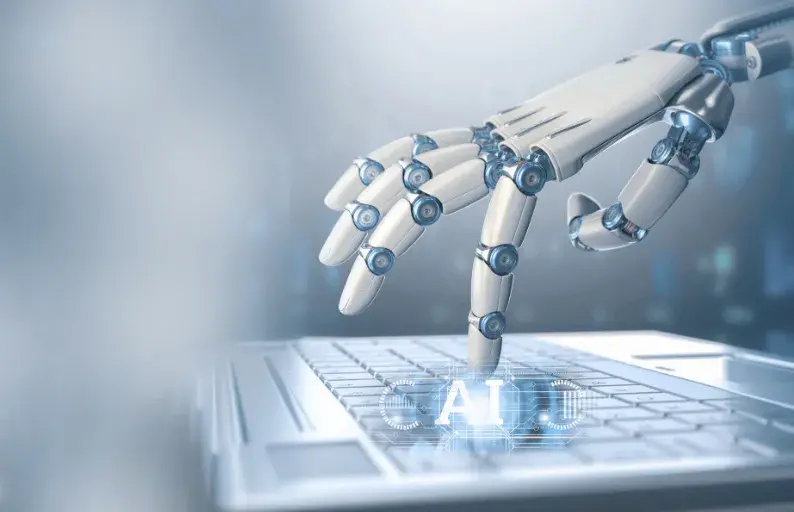
Not long ago, we dedicated a post to tools to check for online plagiarism when doing e-learning.
This time, we will focus on those developed specifically to help you check if your students have abused AI when doing their work.
Take note of these tools and discover how to check a document for plagiarism!
Copyleaks, a highly accurate AI-powered plagiarism checker
First, Copyleaks is able to verify plagiarism with 99% accuracy.
- It detects multiple forms of paraphrasing and content produced by any AI.
- Performs plagiarism check on image-based texts.
- Compare the plagiarised content and the original, highlighting similarities and minor changes.
- It generates reports that you can share or download as PDFs.
- It offers a free trial and payment plans.
How do you know if a text has been generated by artificial intelligence? With Originality. AI!
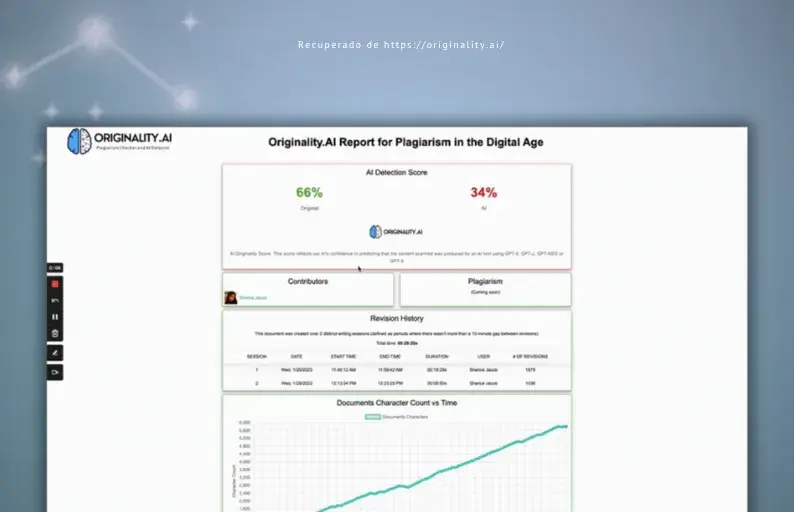
Originality. AI AI is another AI plagiarism detector that offers a similar rate to the previous one and less than 2% false positives.
- It can recognise content created with ChatGPT, GPT-4 or paraphrased content.
- It allows you to scan an entire website for AI-generated or plagiarised content by simply entering the URL.
- While its training is limited to AI detection in English, its ability to check for plagiarism works in multiple languages.
- Provides an API to integrate plagiarism detection functionality and AI-generated content into own work applications.
- It offers a free trial by installing the Chrome extension.
ZeroGPT, an AI plagiarism checker free
Since the emergence of ChatGPT, ZeroGPT has become well known for detecting plagiarism in AI-generated texts.
- It has a text detection accuracy rate of over 98%.
- It contrasts and analyses documents for matches with other online texts, regardless of language. In other words, it identifies the source, whether it comes from ChatGPT, Google Bard or the human brain.
- Detects AI text output in all languages.
- A free version is available.
Content at Scale, a ChatGPT and human detector
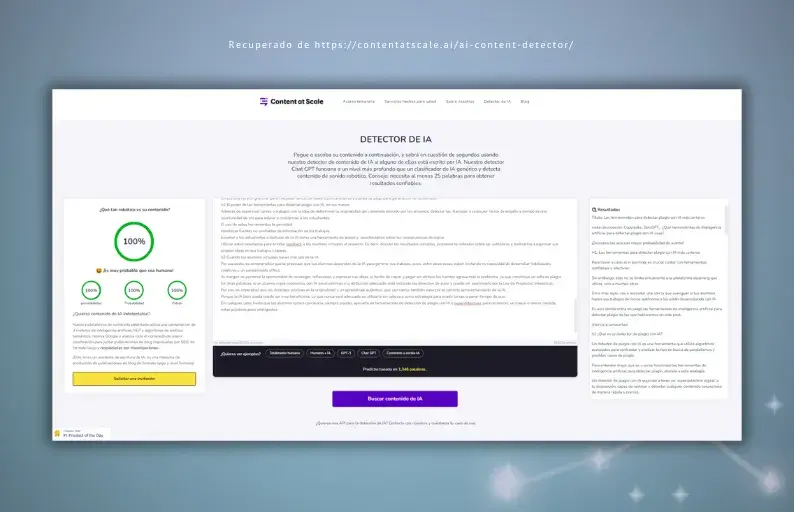
In turn, Content at Scale is an AI plagiarism detector capable of predicting the most likely word choices, which triggers the possibility of efficient AI detection.
- It uses three AI engines: AI, NLP and semantic analysis algorithms.
- It can parse and recognise content made by ChatGPT or any AI text generator.
- Features a free version. Up to 25,000 characters at a time.
How to find plagiarized content? With Corrector
Corrector is also a duplicate content and AI content plagiarism checker.
- Check that the text has not been copied in whole or in part from content found online.
- It can recognise fraudulent content in the text.
- It exploits the GPT-3 algorithm to check whether a text has been generated by a machine.
- Provides a free version. Up to 800 words per attempt.
Writer, an AI for detecting plagiarism and its likelihood
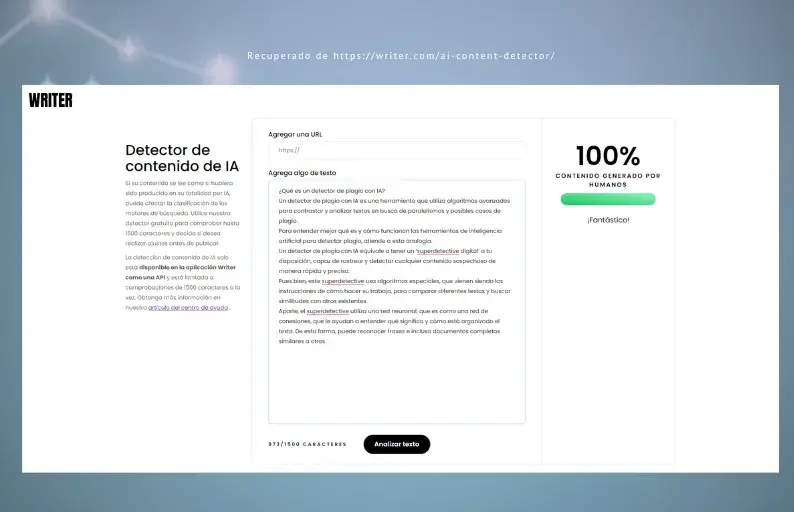
To conclude, we will cite Writer, an AI written content detector that detects and prevents plagiarism.
- Identifies unoriginal content in students' work.
- It locates similarities with other sources and returns reports on the percentage of duplicate content.
- Gives the option of pasting text or tracking a URL.
- AI content detection is only available through an API.
- It offers a free version for checking texts of up to 1500 characters and paid plans for content generation.
The power of the AI plagiarism detector in your hands
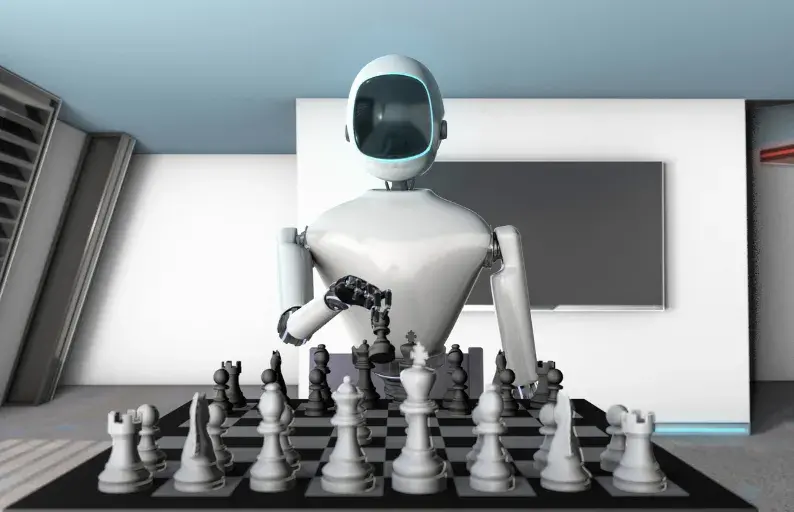
In addition to monitoring assignments with the idea of determining the originality of the content submitted by students, detecting ‘cheating’ or any form of deception in time is a golden opportunity to educate and raise awareness among students.
The use of an AI plagiarism detector will allow you to:
- Identify unreliable sources of information in the work.
- Teach students to enjoy AI as a support tool and make them aware of the consequences of copying.
- Use these results to provide feedback to virtual learners in this regard. That is, discuss the results with them, promote reflection on being authentic and encourage them to express their own ideas in their work and assignments.
When virtual learners misuse AI
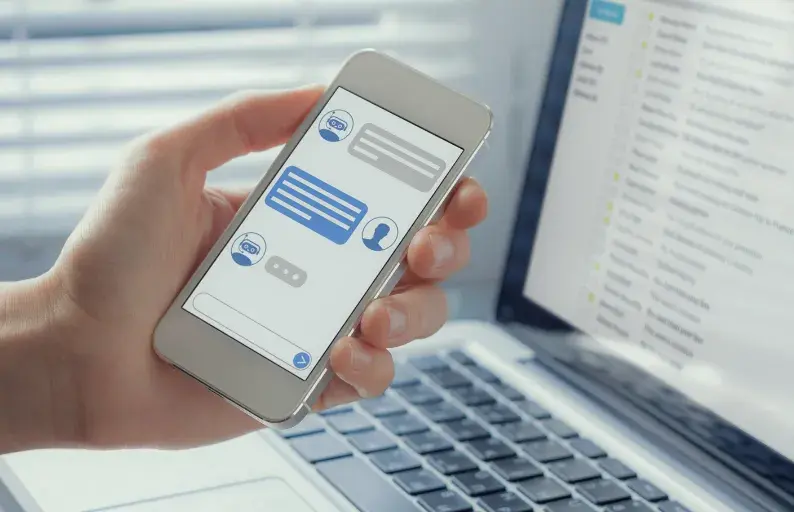
Of course, it is understandable that you are concerned about your students’ reliance on AI to generate their work, as, among other things, they are limiting their ability to develop creative skills and critical thinking.
Apart from missing out on the opportunity to research, reflect, and express their ideas, copying and pasting without attributing sources further compounds the problem, as it constitutes plagiarism.
In other words, if a student copies AI content without permission or proper attribution, he or she is violating copyright and can be punished under the Copyright Act.
Therefore, it is imperative that teachers promote originality and authentic learning, which, by the way, also involves the proper use of AI.
Because AI, when used properly, can be very beneficial. What will never be appropriate is to use it mindlessly and as a strategy to avoid tasks or to gain leisure time.
In any case, until students become aware, you can always rely on an AI plagiarism detector or ‘superdetective’ to recognise, to a greater or lesser extent, these unintelligent practices.
